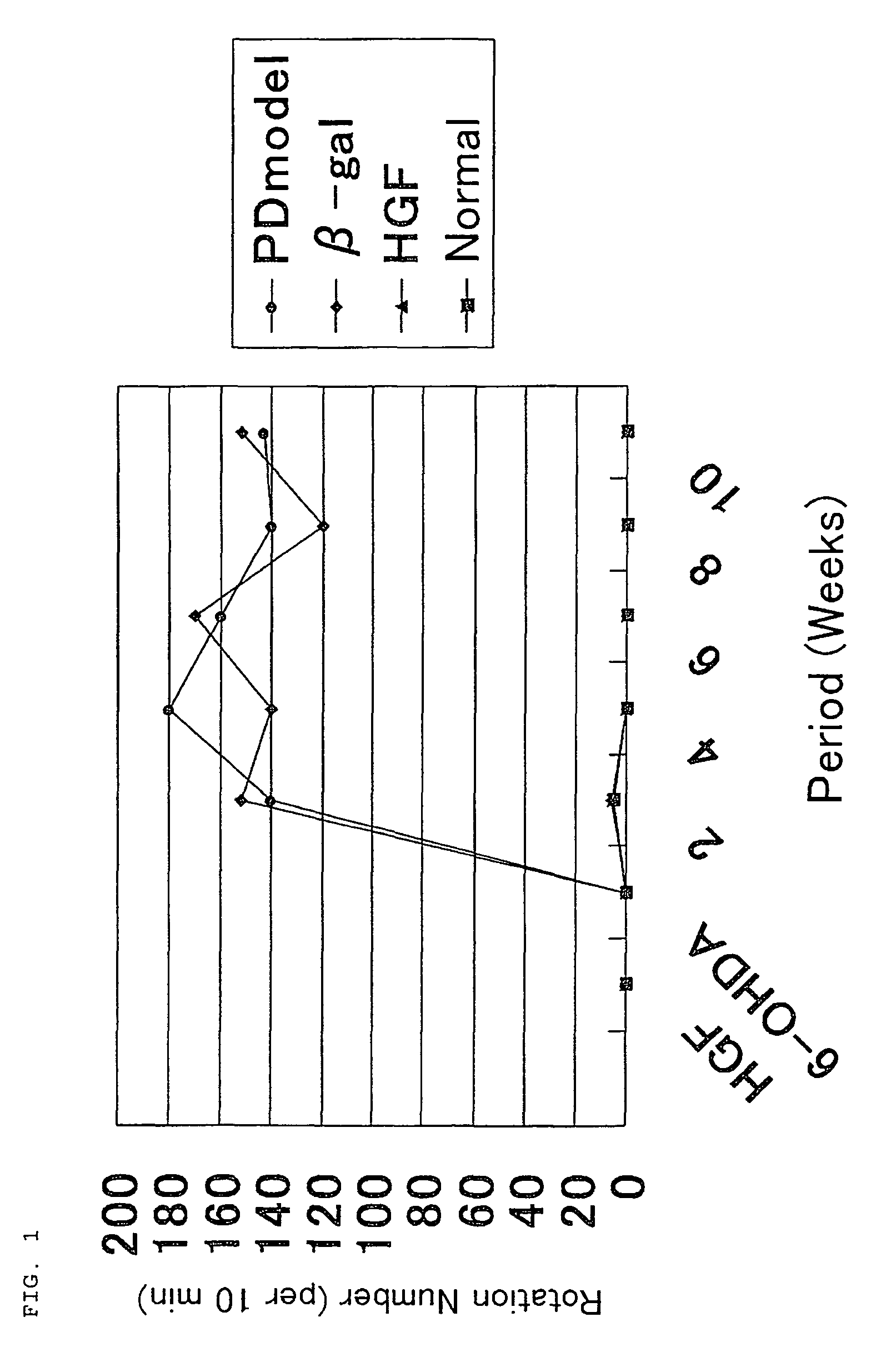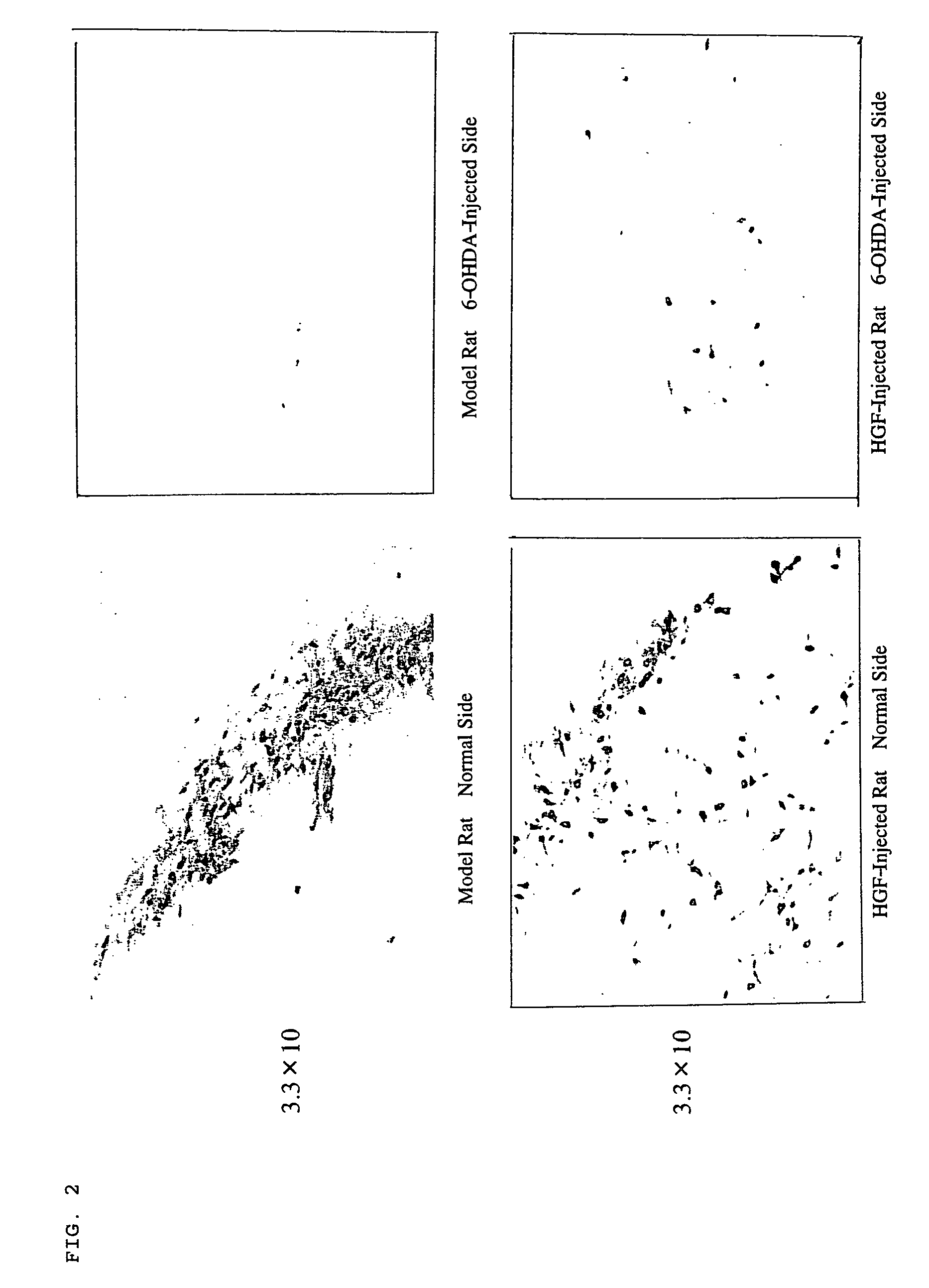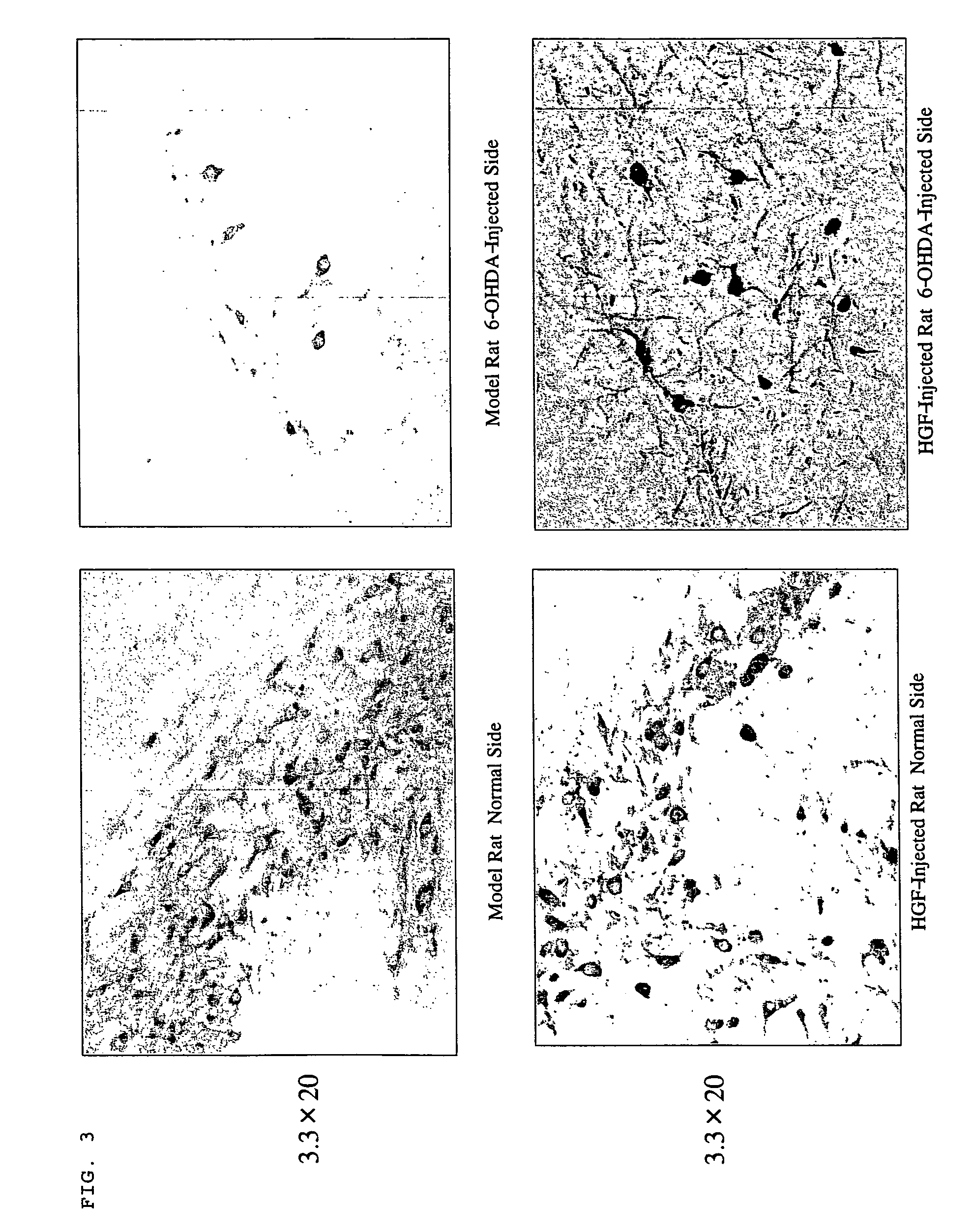Hepatocyte growth factor gene therapy for parkinson's disease
a technology of parkinson's disease and growth factor, which is applied in the direction of peptide/protein ingredients, immunological disorders, metabolism disorders, etc., can solve the problems of insufficient effect, difficult to maintain the blood level of the disease, and inability to say that the nerve protection action is exhibited in-vivo, so as to prevent the degeneration and lesion of dopamine neurons
- Summary
- Abstract
- Description
- Claims
- Application Information
AI Technical Summary
Benefits of technology
Problems solved by technology
Method used
Image
Examples
example 1
Therapy of Parkinson's Disease with HGF
[0046]By using Parkinson's disease model rats, the effect of HGF on model rats was examined praxiologically and histologically.
[0047]The drug-induced Parkinson's disease model rats used were 4-week-aged male Wister rats weighing about 100 g. 10 μl (100 μg) of HGF plasmid was injected to two sites of the striate body of each Wister rat (5 μl each to two sites). Control rats used were Wister rats injected with the same amount of β-gal.
[0048]After 5 days from the injection, 3 μl (9 μg) of 6-OHDA (6-hydroxydopamine), which is a neurotoxin that specifically destroys dopamine neurons, was injected into the nigra macula densa in the mesencephalon.
[0049]After 2, 4, 6, 8, and 10 weeks, respectively, from the injection of 6-OHDA, five animals each from the normal rat group, model rat group, control rat group that was injected with β-gal, and HGF-injected group were observed for gyration. Here, the normal rat group included untreated normal rats, the mode...
example 2
Effect of HGF on Repairing Nerves
[0057]The effect of HGF on regeneration and repairing of substantia nigra dopamine neurons in the mesencephalon was examined.
[0058]3 μl (9 μg) of 6-OHDA was injected into the substantia nigra macula densa in the mesencephalon of Wister rats and then 10 μl (100 μg) of HGF plasmid was injected into the striate body at two sites thereof (5 μl each to two sites). On this occasion, Wister rats injected with β-gal were used as control rats.
PUM
| Property | Measurement | Unit |
|---|---|---|
| half life | aaaaa | aaaaa |
| volume | aaaaa | aaaaa |
Abstract
Description
Claims
Application Information
 Login to View More
Login to View More - R&D
- Intellectual Property
- Life Sciences
- Materials
- Tech Scout
- Unparalleled Data Quality
- Higher Quality Content
- 60% Fewer Hallucinations
Browse by: Latest US Patents, China's latest patents, Technical Efficacy Thesaurus, Application Domain, Technology Topic, Popular Technical Reports.
© 2025 PatSnap. All rights reserved.Legal|Privacy policy|Modern Slavery Act Transparency Statement|Sitemap|About US| Contact US: help@patsnap.com



